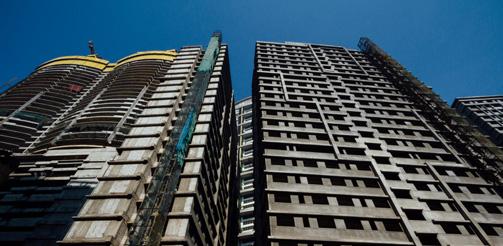Nearly two-thirds of humanity will live in urban centres within the next three decades, surpassing 6 billion people in 2045. Countries in Asia and Africa that will bear the brunt of this monumental growth in the number of urban residents will also need to build their entire current stock of urban infrastructure twice over in order to accommodate the needs of their new urban residents. But a quick glance at the mismatch between the demand and supply of affordable housing in these countries reveals two important trends: First, supply has almost never kept up with demand. Second, given the current pace that affordable homes are being built, and importantly absorbed, future demand is likely to vastly outweigh supply. Simply put, there aren’t enough homes to house everyone.

‘Affordable housing’ schemes failing the majority
Well, that is not entirely true. In India, for instance, where urban population is expected to grow from 410 million in 2014 to 814 million by 2050, there are currently 10 million unsold homes lying vacant. And yet, according to the most recent census, 65 million people live informally in urban India. The majority of urban residents can not afford the homes lying vacant. The real crisis is that land and property markets are such that new investment into high-end apartments continues unabated despite the unsold stock, and all the while, these developments are also displacing those urban residents who informally inhabit cities. The risk of ever greater numbers of informal dwellers being evicted from cities grows. In Delhi, over a thirteen year period between 1990 and 2003, just over 51,000 houses were demolished under ‘slum clearance’ schemes. However, in the following three years alone, at least 45,000 homes were demolished.
Evicted in the ‘interest of the country’
People are now being routinely evicted from cities under the narratives of ‘the greater common good’ and ‘in the interest of the country’, narratives that originally were used to rationalise the displacement of rural people living in areas that required large-scale infrastructure developments like dams. Whether in rural or urban contexts, such displacement is highly politically charged, not only as the benefits of such displacement accrue to those that are already on strong economic and social footing, but the displacement itself is often based on the mis-categorisation of ‘informal’ inhabitation and resulting production of space as ‘illegal’. Gautam Bhan argues that evictions are therefore built on the criminalisation or incarceration of people as a form of social control. Those who are evicted, settle for what they can get, and are marginalised despite their significance to city growth. The resulting infrastructure is therefore as much an indicator of social and class conflict, as it is an indicator of the extent of service provision in the city (I make this case using detailed ethnographic study of inner-city Mumbai here). Even those economically challenged groups lucky enough to avoid outright evictions are eventually priced out of their own homes as the infrastructure brings its benefits, and property and rental prices rise.
The phenomenon is not limited to India alone. Saskia Sassen points out in her new book titled ‘Expulsion’, the new global market for land, and the triumph of finance capital, continues to displace a dramatically increased number of people. This has lead to a rise in homelessness due to foreclosures and underemployment, and causing the criminalisation or incarceration of people as a form of social control. One in four people are worried about losing their home against their will in the next five years, revealed in a survey of nine countries. People are being expelled at historically remarkable levels, not only from their habitats, but also from the benefits of the global economic system.
Importance of local regulations to trump the global economy
Jeremy Corbyn, the leader of the Opposition party in the UK Parliament recently remarked ‘[urban] regeneration is a much abused word. Too often what it really means is forced gentrification and social cleansing’. He too is referring to the nature of global capital that is driving the housing sector away from affordable homes, and towards high value properties; away from urban centres that are inclusive of diversity, and towards cities that are simply containers for high value assets. And this is where we need local (municipal) regulations to trump the current global economy. Local regulations need to ask who has the incentives to build affordable housing at a scale required to meet the rising global demand; what are their incentives; and how these incentives might be shaped to produce shared urban spaces that respond to the needs of the most marginalised residents. Two important starting points to understand and answer these questions are Saskia Sassen’s book on Expulsions, and David Harvey’s new book on the madness of economic reason.
The vast mega-city with a population of 10 million plus where over half the residents live in squatter settlements is not an image restricted to doomsday sci-fi movies. It is a reality today. If local regulations are not capable of being in command of the vast urban transformations that are at play, not only will poverty and inequality become further entrenched, but cities will consequently cease to be the engines of growth they are charted out to be.
Image: ‘New apartment towers in Mumbai, India’. Credit: Adam Cohn on Flickr